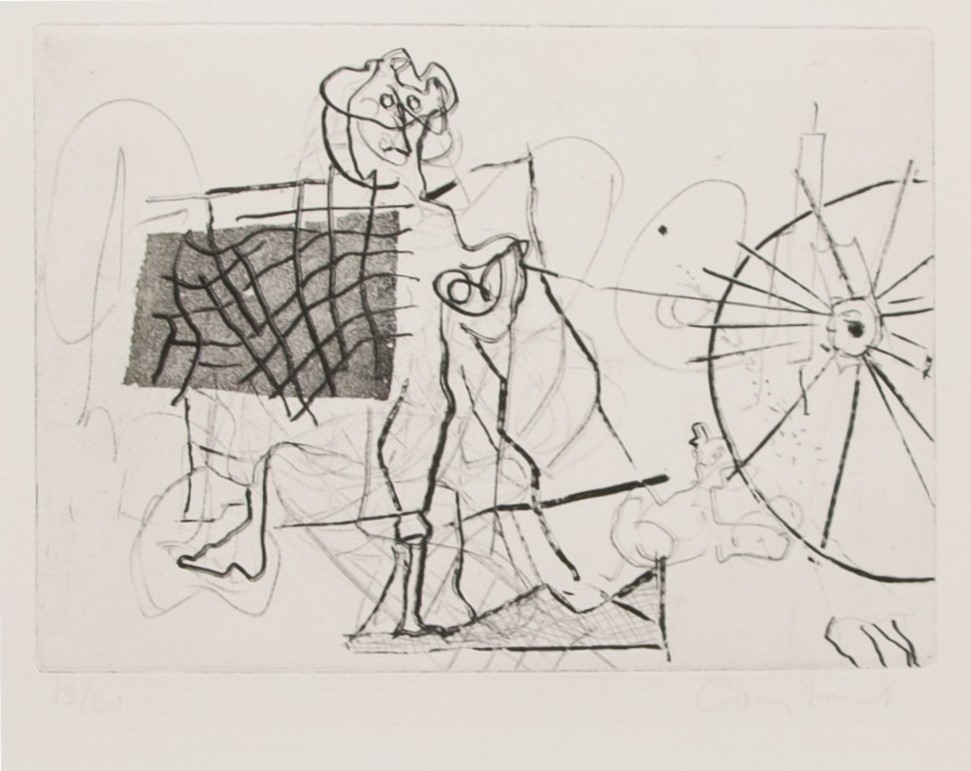Constant is born in Amsterdam in 1920 as Constant Anton Nieuwenhuys. Between 1938 and 1941, he attends art school. In 1947, he has his first solo exhibition in Amsterdam. In 1948, he is co-founder of the Dutch Experimentele Groep and later that year of the international Cobra group. Together with the Belgian Christian Dotremont, he is the most important theorist of Cobra. In numerous manifests and articles, he investigates the social role of the artist and calls for the liberation of creativity and fantasy, as part of a continuously regenerating culture. In the work that he makes during this period, figures appear that seem to be derived from children’s drawings, characteristic of the Cobra members’ work.
In 1950, Constant settles in Paris. In this period he creates his ‘war paintings’, full of remnants of a destroyed world, in which helpless people raise their hands to heaven. During the late fifties, Constant develops ideas about ‘the ideal city’, New Babylon, in which man, freed from labour (the ‘homo ludens’), can explore and exploit his creative abilities – ideas that affect his artistic production of those days.
In the seventies, the aesthetic component in Constant’s work starts to prevail. The influence of the old masters is more and more noticeable.
Constant’s work has been exhibited in museums all over the world. An extensive overview, and a lot of information about his life and work, can be found on the website of the Stichting Constant (Constant Foundation).


























